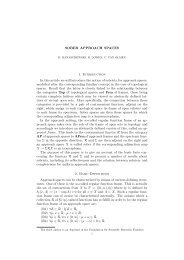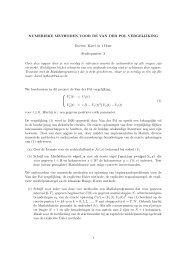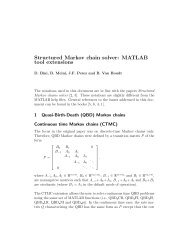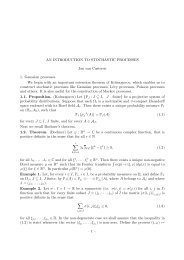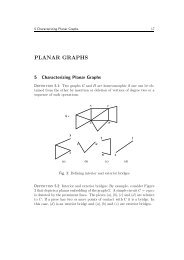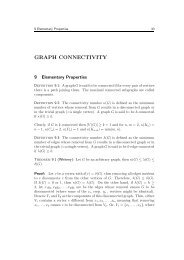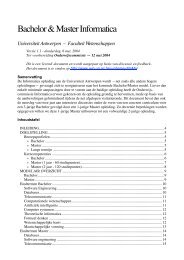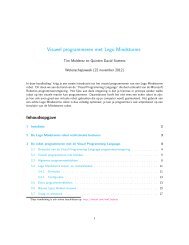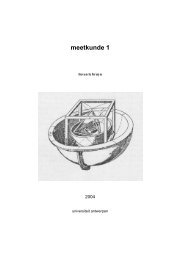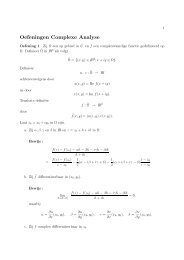Slim: Directly Mining Descriptive Patterns - Universiteit Antwerpen
Slim: Directly Mining Descriptive Patterns - Universiteit Antwerpen
Slim: Directly Mining Descriptive Patterns - Universiteit Antwerpen
Create successful ePaper yourself
Turn your PDF publications into a flip-book with our unique Google optimized e-Paper software.
elative usage of X ∈ CT is the probability that X isused in the encoding of an arbitrary t ∈ D. For optimalcompression of D, the higher Pr(X | D), the shorter itscode should be. In fact, from Information Theory [4],we have the Shannon entropy, which gives us the lengthof the optimal prefix code for X aswhereL(X | D) = − log Pr(X | D) ,Pr(X | D) =usage(X)∑usage(Y ) .Y ∈CTThe length of the encoding of transaction is now simplythe sum of the code lengths of the itemsets in its cover,∑L(t | CT ) = L(X | CT ) .X∈cover(t)The size of the encoded database is then the sum of thesizes of the encoded transactions,L(D | CT ) = ∑ t∈DL(t | CT ) .To find the optimal code table using MDL, we needto take both the compressed size of the database, andthe size of the code table into account. For the sizeof the code table, we only consider those itemsets thathave a non-zero usage. The size of the right-handside column is obvious; it is simply the sum of all thedifferent code lengths. For the size of the left-hand sidecolumn, note that the simplest valid code table consistsonly of the single items. This code table we refer toas the Standard Code Table, or ST . We encode theitemsets in the left-hand side column using the codes ofST . This allows us to decode up to the names of items.The encoded size of the code table is then given by∑L(CT | D) = L(X | ST ) + L(X | CT ) .X∈CTusage(X )≠0We define the optimal set of itemsets as the one whoseassociated code table minimises the total encoded sizeL(CT, D) = L(CT | D) + L(D | CT ) .More formally, we define the problem as follows.Minimal Coding Set Problem Let I be a setof items and let D be a dataset over I, cover a coveralgorithm, and F a collection of candidate patternsF ⊆ P(I). Find the smallest set of patterns S ⊆ Fsuch that for the corresponding code table CT the totalcompressed size, L(CT, D), is minimal.Using our cover algorithm only patterns occurringin D can be used in describing the data. As such, P(I)is a clear overestimate for what candidates the optimalCT can consist of. For reasons of efficiency, and withoutloss of generality, we can hence limit F to the collectionof all itemsets in D with a support of at least 1.Even for small F, however, the search space of allpossible code tables is rather large—and moreover, itdoes not exhibit structure nor monotonicity we can useto efficiently find the optimal code table [22]. Hence, weresort to heuristics.2.4 Introducing Krimp The Krimp algorithm wasintroduced by Siebes et al. [17, 22] as a straightforwardapproach for mining good approximations of the optimalcode table. Subsequent research showed these codetables to indeed be of high quality, and useful for a widerange of data mining tasks [21, 9, 22, 18].The pseudo-code of Krimp is given as Algorithm 1.It starts with the singleton code table (line 1), anda candidate collection F of frequent itemsets up toa given minsup. The candidates are ordered firstdescending on support, second descending on itemsetlength and third lexicographically. Each candidate F isconsidered in turn by inserting it in CT (3), denotedby CT ⊕ F , and calculating the new total compressedsize (4). It is only accepted if compression improves (4).If accepted, all elements X ∈ CT are reconsidered wrt.their contribution to compression (5).The minsup parameter is used to control the numberof candidates: the lower minsup, the more candidates,the larger the search space, and hence the betterthe approximation of the optimal code table. Asby MDL we are after the optimal compressor, minsupshould be set as low as practically feasible. Hence, technicallyminsup is not a parameter.In practice, however, keeping the number of itemsetsfeasible is difficult. Especially for dense or largedatabases, minute decreases in threshold give rise toenormous increases in patterns. <strong>Mining</strong>, sorting, andstoring these in large numbers takes non-trivial timeand effort, even before Krimp can begin selecting.Its robust empirical results aside, Krimp is a ratherrough greedy heuristic: it considers each candidate onlyonce, in a static order, raising the question how goodits approximations really are.A standard approach to hard optimisation problems,with provable approximation bounds in case ofsub-modular set functions [15], is to locally optimise thetarget function. For Krimp, local optimisation translatesto iteratively finding the F ∈ F that maximallyincreases compression. By considering F quadraticallyinstead of linearly, however, the running time quickly



